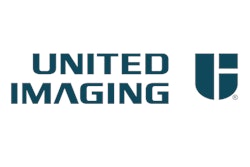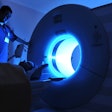
Hospitals will need more service support for mobile x-ray systems in the near term due to the strain put on these units during the COVID-19 outbreak. At the same time, service needs may be lower for MRI, mammography, and nuclear medicine equipment.
These findings come from IMV Medical Information Division's newly published 2020 Diagnostic Imaging Equipment Service Outlook Report. For the report, IMV researchers queried U.S. hospitals to determine changes in their service needs in March-May 2020 due to the COVID-19 pandemic.
 Lorna Young of IMV Medical Information Division.
Lorna Young of IMV Medical Information Division.The researchers found that in "normal times," the types of support services that hospitals typically have in their current service contracts for diagnostic imaging equipment are the classic "break-and-fix" and preventive maintenance services.
The top support services sought include "preventive maintenance visits during routine working hours," "technical support by telephone," "contracted onsite response time for service visits," "OEM parts," and "remote diagnostics." These support services address a key department priority to "reduce the mean time to repair imaging equipment," which two-thirds of the respondents indicated is a top priority to address over the next few years.
Clearly, the COVID-19 pandemic has had an immediate impact on imaging procedures. The survey responses showed that the top two changes affecting imaging departments due to the current climate are "declines in imaging procedures due to reduction in related elective procedures" (with 90% of the respondents so indicating) and "due to patient cancellations" (85%).
This procedure downturn has in turn affected the short-term need for service support, where the key services needed are the traditional "break-and-fix" services. Of the respondents who have needed more service support for at least one modality, the top two support services needed were "more onsite service visits" and "replacement parts."
As a result of COVID-19, the top modality needing more service support is mobile x-ray, primarily due to the increased usage of mobile x-ray during this period for COVID-related procedures.
The top three modalities needing less service support are nuclear medicine cameras, mammography, and MRI, mostly due to fewer studies being performed using these modalities during the March-May 2020 time frame.
The exact timing and nature of a full recovery for imaging departments to return to normal from COVID-19 is yet to be determined. Currently, imaging departments across the U.S. are experiencing reduced operating hours or days open, closures of imaging locations and services (such as mammography services), and layoffs/furloughs/hiring freezes of radiologic technologists.
Going forward, IMV's 2020 Diagnostic Imaging Equipment Service Outlook Report points to a more strategic direction beyond "break-and-fix" that imaging departments will seek from their service providers. When asked to indicate which types of support services will be more important to have in future service contracts, imaging departments are likely to seek value-added remote and software-related services in addition to the classic "break-and-fix" services, including "remote diagnostics," "cybersecurity services," "remote repair of software," "software upgrades for new clinical capabilities," and "software updates for bug fixes." Interestingly, these value-added services will work well, as the "new normal" may require even more sophisticated virtual solutions.
Even before the COVID-19 pandemic, U.S. hospitals have been closely scrutinizing their capital and operating costs for imaging equipment. With continued pressure on revenue sources, coverage for equipment maintenance, repair, and value-added services continue to be critical considerations in such budgetary decisions. As their use and deployment of imaging equipment continues to grow, hospitals and healthcare systems are seeking to consolidate and standardize their postwarranty service contracts across their imaging locations to decrease their operating costs, while gaining improved value for the support services they receive.
To achieve this balance, the three top strategies hospitals are seeking to pursue for future postwarranty service contracts include:
- Increase the use of service contracts with imaging original equipment manufacturers (OEMs) to cover multiple modalities of their own equipment in a single contract.
- Consolidate/standardize the service contracts for imaging equipment in multiple facilities/locations in their organization
- Increase the use of service contracts with a single service provider to cover equipment from multiple imaging OEMs in a single contract.
What are some drivers for seeking to consolidate postwarranty service contracts? Motivations to consolidate individual modality service contracts into single multimodality contracts include, not only to reduce overall service contract costs, but to negotiate for value-added services beyond "break-and-fix." Services that are more likely to be included in single contracts that cover multiple modalities include "asset management/life cycle cost management," "uptime guarantees," "cybersecurity services," "remote diagnostics," "contracted onsite response time for service visits," and "OEM parts."
For postwarranty service, hospitals are selective in which modalities they use full-service contracts with OEMs for. Virtually all U.S. hospitals have service contracts with at least one OEM for the postwarranty service of their diagnostic imaging equipment, while over half have service contracts with at least one third-party service organization.
Depending on the modality, they might contract with third-party service organizations or use their own in-house biomeds as first call. Hospitals are more likely to use full-service contracts with OEMs for CT, MRI, and x-ray mammography systems, but for general x-ray equipment, they are more likely to use either a third-party service organization or use shared service contracts, where the in-house biomed is first call, with some contracted hours for onsite service by the outside service provider when needed.
Suggestions from respondents to the IMV survey echoed the need for better communications with their service providers and value-added remote support services to further improve their mean time to repair and imaging operations:
- "Better communication with service techs and imaging directors regarding status of equipment (fixed, waiting for parts, will return in morning, etc.)"
- "Use of artificial intelligence to identify concerns before they become a major problem"
- "Continued remote access to assess the issue so parts can be ordered, if needed, rather than wasting the drive time of a biomed tech to come diagnose onsite"
- "Cybersecurity is the hot topic now. We are fully digital and integrated with PACS."
- "Lessons learned from COVID will be part of the new normal."
Lorna Young is senior director, imaging insights, at IMV Medical Information Division, part of Science and Medicine Group.
IMV's 2020 Diagnostic Imaging Equipment Service Outlook Report provides insight into the types of postwarranty service arrangements used by U.S. hospitals for eleven key imaging modalities: CT, MRI, PET/CT, nuclear medicine/SPECT cameras, fixed C-arms, portable C-arms, fixed and mobile general x-ray, radiographic fluoroscopy (RF), mammography, and ultrasound. IMV's report quantifies the market shares of the imaging equipment manufacturers (OEMs) vs. third-party service providers, describes the use of different types of service contract arrangements by modality, the types of support services preferred, and identifies trends in priorities for future service contracts and preferred contract types. The report is based on responses from more than 230 radiology/imaging administrators and biomedical engineering managers in U.S. hospitals who participated in IMV's nationwide survey in February-March 2020, and includes a chapter on the impact of COVID-19 on the need for equipment service in March-May, by modality, using data collected in June 2020.
Service providers covered in this report include both equipment manufacturers and third-party service organizations, including Agfa, BC Technical/Alpha Source, Canon/Toshiba, Carestream, Fujifilm, GE, Hitachi, Hologic, Konica Minolta, Philips, Samsung, Shimadzu, Siemens, Sodexo, TriMedx, and United Imaging.
For information about purchasing IMV's report, visit the corporate website at imvinfo.com or call 703-778-3080 ext. 1033 to speak with a representative.
Disclosure: IMV Medical Information Division is a sister company of AuntMinnie.com.



















